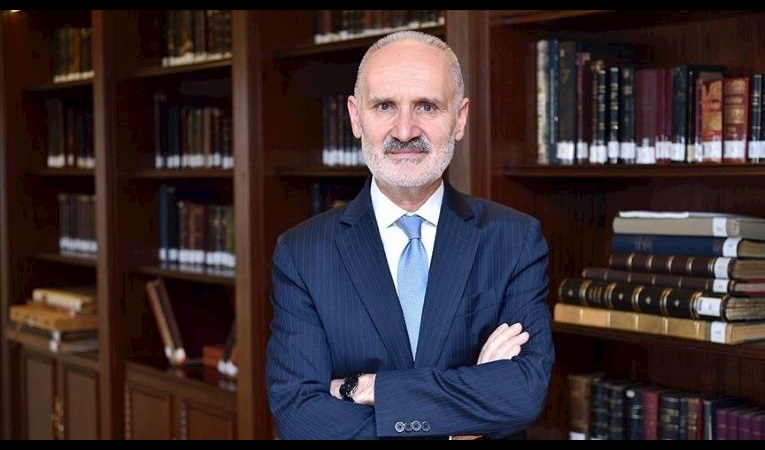
-
BIST 100
 10134,51%0,27En Düşük10110,75En Yüksek10203,58
10134,51%0,27En Düşük10110,75En Yüksek10203,58 -
DOLAR
 40,02%0,14Alış40,0134Satış40,0202En Yüksek40,0238
40,02%0,14Alış40,0134Satış40,0202En Yüksek40,0238 -
EURO
 47,07%0,61Alış47,0672Satış47,0755En Yüksek47,1245
47,07%0,61Alış47,0672Satış47,0755En Yüksek47,1245 -
EUR/USD
 1,18%0,36Alış1,1750Satış1,1751En Yüksek1,1768
1,18%0,36Alış1,1750Satış1,1751En Yüksek1,1768 -
ALTIN
 4280,32%-0,21Alış4279,79Satış4280,86En Yüksek4302,66
4280,32%-0,21Alış4279,79Satış4280,86En Yüksek4302,66
-
BIST 100
 10134,51%0,27En Düşük10110,75En Yüksek10203,58
10134,51%0,27En Düşük10110,75En Yüksek10203,58 -
DOLAR
 40,02%0,14Alış40,0134Satış40,0202En Yüksek40,0238
40,02%0,14Alış40,0134Satış40,0202En Yüksek40,0238 -
EURO
 47,07%0,61Alış47,0672Satış47,0755En Yüksek47,1245
47,07%0,61Alış47,0672Satış47,0755En Yüksek47,1245 -
EUR/USD
 1,18%0,36Alış1,1750Satış1,1751En Yüksek1,1768
1,18%0,36Alış1,1750Satış1,1751En Yüksek1,1768 -
ALTIN
 4280,32%-0,21Alış4279,79Satış4280,86En Yüksek4302,66
4280,32%-0,21Alış4279,79Satış4280,86En Yüksek4302,66
- Anasayfa
- Haberler
- Tüm Haberler
- Corporate Wellness Also Increases Profits
Corporate Wellness Also Increases Profits
The incredible transformation of the business world is producing a radical change in human resources policies. Companies are developing special strategies and introducing innovations in order to re...
The incredible transformation of the business world is producing a radical change in human resources policies. Companies are developing special strategies and introducing innovations in order to retain personnel and increase loyalty. It is with this aim in mind that the concept of ‘corporate wellness’ has come onto the agenda. Now the global giants are organising health and wellness programs and virtually competing with each other to ensure that their personnel are happy in the office. There are a few companies in Turkey which are joining in this competition. But analysts forecast that this number will increase rapidly in the future.
“It is virtually impossible to manage a successful company with unhealthy, unhappy personnel.” These words belong to Steven Reinemund, CEO of the foodstuffs and soft drinks giant Pepsi-Co which employs 143,000 personnel worldwide. Starting from this philosophy, Reinemund and his team have been running health and wellness programs for their personnel since 1990. These programs, which are known in the literature as ‘corporate wellness’ programs, can be briefly summarized as establishing a balance between employees’ work and private lives. Another aim of the programs is to take preventative measures related to employees’ health problems.
Many large companies across the world are offering such ‘wellness’ programs for their employees in order to secure an advantage in a competitive environment. According to the Wellness Councils of America, 80 percent of major companies worldwide are implementing this kind of program. These include companies which are leaders in their fields, such as Texas Instruments, Johnson & Johnson, HP, Morgan Stanley, DuPont, American Express and Time Warner. The health and wellness which these companies have introduced have resulted in a significant saving in terms of annual expenditure. According to a survey of 211 companies by the US insurance company Prudential, an effective wellness program results in a reduction of 20 percent in the days when employees do not come to work. This cuts per capita inefficiency by 32 percent and expenditure on pharmaceuticals by 46 percent.
Profit of US $312 per person
Companies throughout the world have been interested in wellness programs for approximately 20 years. One of them is DuPont, which has been successfully applying corporate wellness programs since 1984. The company runs programs covering subjects such as healthy eating, lipid control, regular exercise, stress management, blood pressure control, quitting smoking and dental health.
Pepsi, which is one of the leaders in this field, runs programs in all the departments in the headquarters of Frito Lay, Kentucky Fried Chicken, Pizza Hut and Taco Bell. The company has a fitness centre of approximately 1,150 square meters in its headquarters in New York. Here it conducts special activities on healthy eating. For every one dollar that the company invests in these ‘wellness’ programs it gets back three dollars. For companies such as Bank of America, Kennecott and Equitable Life every dollar that is invested generates an average of six dollars.
Companies assign 7 percent of their turnover
 There are very few companies in Turkey which run ‘corporate wellness’ programs. Those companies which have such programs include Motorola, TEB, Sabancı, Mercedes, Unilever and HP. Analysts believe that this number will increase in the future. Candan Karaca from DBE Consulting thinks that this increase will be driven by demand from employees. She notes that employees no longer choose companies which offer a good salary and health insurance. In the same way, companies in Turkey are finally showing an interest in this kind of program as a way to increase company loyalty among qualified personnel. Fitness centres are being opened in company buildings and psychological support services are also being introduced.
There are very few companies in Turkey which run ‘corporate wellness’ programs. Those companies which have such programs include Motorola, TEB, Sabancı, Mercedes, Unilever and HP. Analysts believe that this number will increase in the future. Candan Karaca from DBE Consulting thinks that this increase will be driven by demand from employees. She notes that employees no longer choose companies which offer a good salary and health insurance. In the same way, companies in Turkey are finally showing an interest in this kind of program as a way to increase company loyalty among qualified personnel. Fitness centres are being opened in company buildings and psychological support services are also being introduced.
Research shows that sectors where intellectual capital provides a competitive advantage are where companies first begin to implement such programs. Candan Karaca says that years ago high-level executives were given training at Tübitak on how to cope with stress. She notes that, in the same way, data processing and consulting sectors are also providing similar services to employees, albeit with different content.
Research shows that companies in which women occupy high level positions allocate a higher proportion of their budget to this kind of program. “In the US a large majority of companies in the Fortune 100 run extensive programs of this sort,” says Karaca, adding that companies allocate between 1-7 percent of their turnover to this kind of program.
INCREASES PRODUCTIVITY BY 25 PERCENT
Research has shown that companies with healthier employees increase productivity by 25 percent. For this reason, many companies all over the world are running programs to secure better, healthier working conditions for their employees. For example, the New York Telephone Company runs mediation programs for stress management. In the same way, Illinois Bell and Metropolitan Life Insurance hold regular training sessions for their employees on stress management. ICI-ZENECA has its own internal six-stage stress management program.
JOHNSON & JOHNSON MODEL The world famous Johnson and Johnson offers its employees an extensive health and wellness program. This includes health checks, consulting and training on ergonomics. In addition, there are also programs to increase employee loyalty to the company. The companies apply these programs in order to reduce the number of resignations, reach profitable customers and raise productivity. Indeed, research shows that wellness programs have a positive impact in these areas.
MULTINATIONALS LEAD THE WAY IN TURKEY In Turkey, the centralisation means that this kind of service is more widespread in multinational companies in particular. In addition, there are some corporate wellness programs in sectors such as banking, insurance, heavy industry and manufacturing. For example, some companies have crèches, health centers and swimming pools. Other companies have their own sports facilities and employ permanent medical staff. These are the most common type of wellness programs.
One dollar invested brings at least twice as much in return
(The return for a company on every dollar spent on ‘wellness’ programs)
Company How much it gets back ($)
Coors 6,15
Bank of America 6
Kennecott 5,78
Equitable Life 5,52
General Mills 3,9
Travelers 3,4
Motorola 3,15
PepsiCo 3
EBC-Indiana 2,51
DuPont 2,05
Şeyma Öncel
[email protected]
Türkiye ve dünya ekonomisine yön veren gelişmeleri yorulmadan takip edebilmek için her yeni güne haber bültenimiz “Sabah Kahvesi” ile başlamak ister misiniz?






